| Intl. Notebook | Jul 6 2017 |

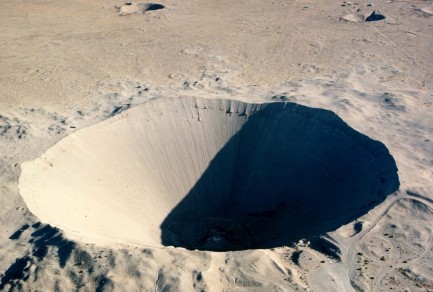
This photo shows the crater made by the Sedan nuclear test, also known as the Storax Sedan test, which happened today in 1962 as part of Operation Storax. The crater is the result of an explosion that displaced twelve million tons of earth, and at 320 feet deep and 1280 feet in diameter is the largest man-made crater in the United States. It's also—bizarrely we think—listed on the National Register of Historic Places, especially weird when you consider that it sent two radioactive plumes wafting northeast from the Nevada explosion site, cross country from state to unsuspecting state, to settle especially heavily upon Iowa, Nebraska, South Dakota, and Illinois. Of all the nuclear tests conducted in the United States, Sedan ranked highest in overall activity of radionuclides in fallout, distributing nearly 7% of the total amount of radiation which fell on the U.S. population during all of the nuclear tests at the Nevada Test Site. Historic indeed. You see the explosion that caused all that below.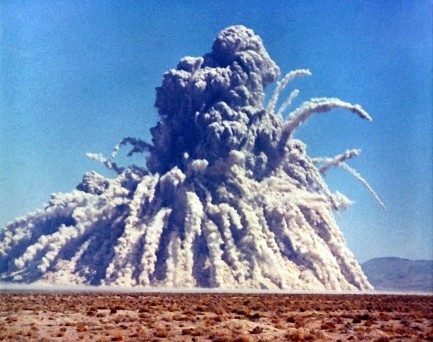
| Hollywoodland | Jul 20 2016 |

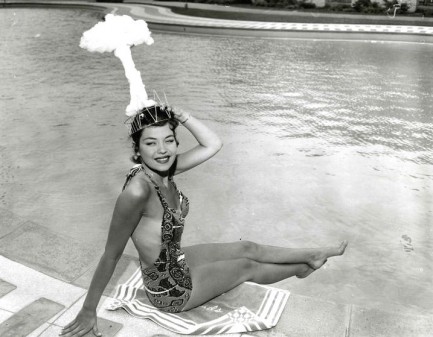
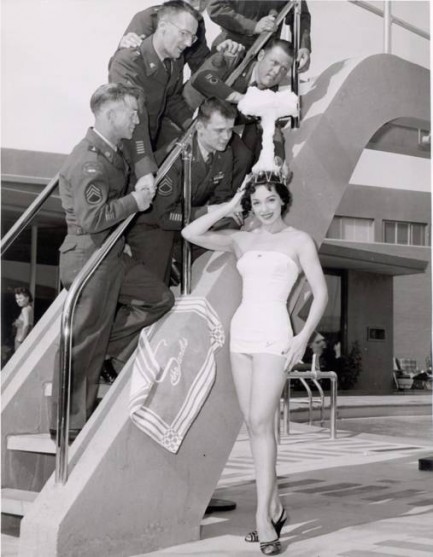 The above photo was made at the pool at the Sands Hotel and Casino in Las Vegas during the summer of 1955, and the one at right was made at the same location earlier in the year, with Lawson in a different suit. Hard to know if publicity from getting all mushroom-cloudy helped raise her profile, but in any case she began appearing on television in 1958, and by 1961 had launched a movie career.
The above photo was made at the pool at the Sands Hotel and Casino in Las Vegas during the summer of 1955, and the one at right was made at the same location earlier in the year, with Lawson in a different suit. Hard to know if publicity from getting all mushroom-cloudy helped raise her profile, but in any case she began appearing on television in 1958, and by 1961 had launched a movie career.| Intl. Notebook | Jun 24 2016 |

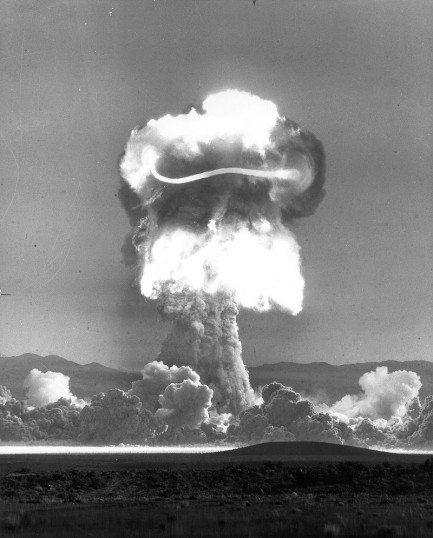
This photo shows the debris cloud of the nuclear test Priscilla, which was part of the series of tests codenamed Operation Plumbbob, conducted during the summer and autumn of 1957 at the Nevada Test Site. For this particular blast, more than seven hundred pigs were garbed in suits made of different materials to test various means of protecting living tissue from thermal radiation. Guess what? It didn't work. The pigs survived, but with third-degree burns over 80% of their bodies, making for one of the cruelest, but undoubtedly most mouth-watering nuclear tests in history.
| Vintage Pulp | Oct 18 2015 |

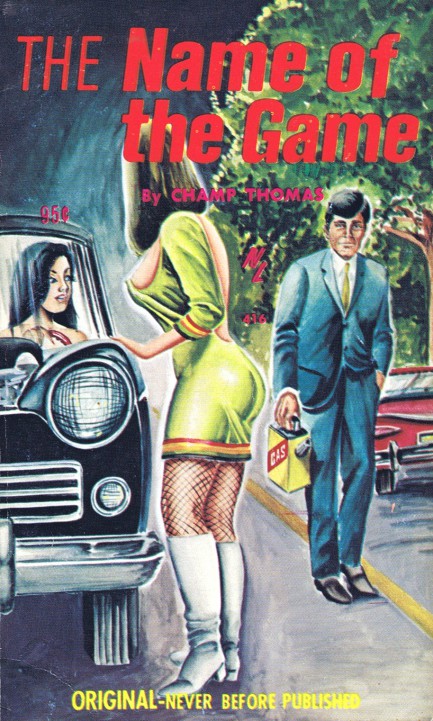
Above, a cover for The Name of the Game by Champ Thomas for Neva Spicy Library, a subsidiary of Neva Paperbacks, 1967. The unusual name of the publisher derives from its location in the world capital of sleaze, Las Vegas, Nevada. Uncredited art.
| Intl. Notebook | Mar 17 2015 |

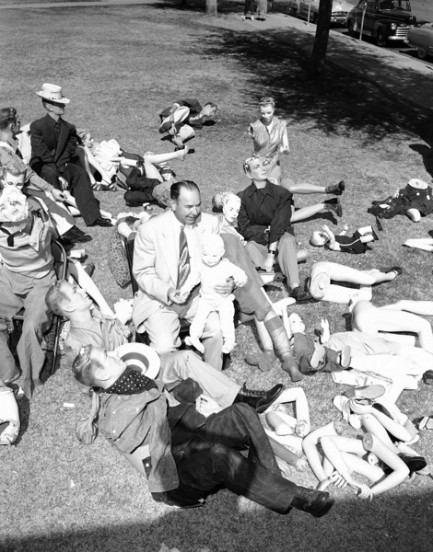
In the photo above, department store manager Hillman Lee checks out a group of battered mannequins he had helped the U.S. government use in a nuclear test. The mannequins were placed inside House No. 1 at the Nevada Proving Grounds and subjected to the blast effects of the sixteen-kiloton shot codenamed Annie, which was part of Operation Upshot-Knothole. The images below show up on all sorts of websites identified with all sorts of tests, but these come from the Nevada Department of Energy website and are identified there as the actual House No. 1 that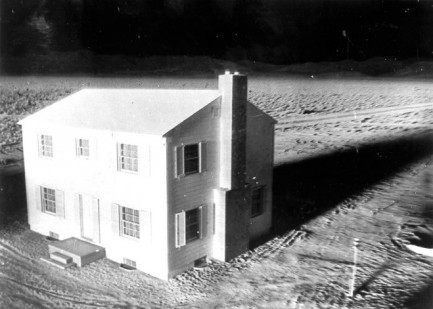
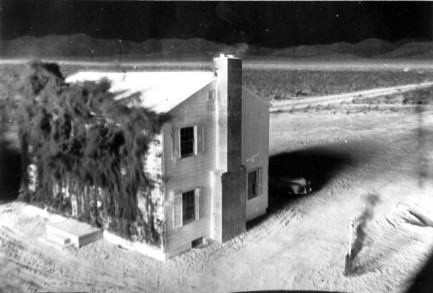
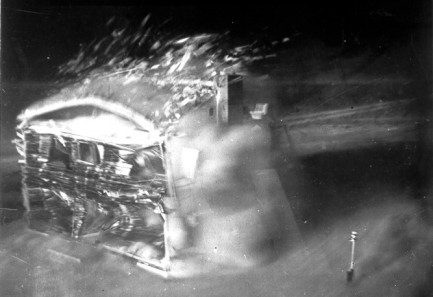
 was blown to smithereens along with Hillman’s mannequins (those may seem in strangely good shape to you, but keep in mind that fiberglass melts at about 37,000°F, whereas human flesh burns at about 120°F and melts shortly thereafter).
was blown to smithereens along with Hillman’s mannequins (those may seem in strangely good shape to you, but keep in mind that fiberglass melts at about 37,000°F, whereas human flesh burns at about 120°F and melts shortly thereafter).
For an interesting indication of the bizarro world some people lived in during the nuclear 1950s, consider this quote from Hillman concerning the use of mannequins (which, by the way, he dressed differently as a tribute to American individuality and choice): “The outcome of this test is unpredictable, but the results of the evaluation may be a powerful factor in deciding fashion trends in the years to come.” That’s right—he thought he could learn from the test how to make nuclear blast-resistant clothes, market them, and make money selling them. Kind of makes you wonder whether humans are simply destined to fail on this planet, doesn’t it? Nuclear test Annie occurred at 5:20 a.m. today in 1953.
Note: We got an e-mail, and the question was whether the mannequin photo was really made after the test, or before. If the photo were larger you'd be able to see that the mannequins are, in fact, a bit battered. Of course, that raises the question of whether they're radioactive. Being the morbid guys we are, we did check historical records on Hillman Lee to see if maybe he developed health problems, but there's nothing on him. Presumably he made a fortune on his nuke resistant garments and retired to a life of quiet but comfortable obscurity. Or not.
| Intl. Notebook | Oct 26 2014 |

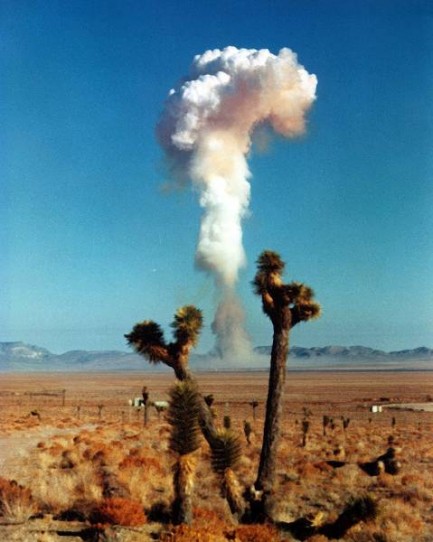
The De Baca nuclear test was part of Operation Hardtack II, a series of thirty-seven Nevada Test Ground blasts squeezed into seven weeks in order to beat a looming deadline—the beginning of a U.S./U.S.S.R. nuclear moratorium. The test ban failed when the Soviets began testing again three years later, a political crisis precipitating that failure, specifically a showdown concerning the status of East Berlin.
The test ban would have failed anyway, though, as all test bans have failed, and all future test bans will fail, because nuclear weapons are seen by weak nations as the ultimate defense against invasion by stronger nations. And of course, they’re right. Since only the year 2000, nuclear-armed nations have invaded non-nuclear nations nine times. Conversely, since the dawn of the nuclear era in 1945, a period comprising nearly seventy military encroachments, no nuclear nation has had its mainland invaded.
That's the entire uncomplicated why of nuclear weapons. There may be periods of relative inactivity, but as time goes by more nations will build them. Nuclear disaster has no choice but to follow one day. There are two scenarios for survival—either all the nuclear nations agree to reduce and eventually dismantle their nukes, or one nuclear armed nation comes to dominate all the others. Guess what? The second scenario isn't going to happen. Not ever. The De Baca test occurred today in 1958.
| Intl. Notebook | May 2 2014 |

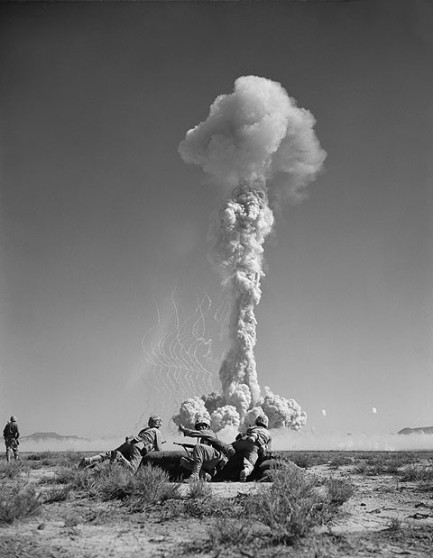
This debris cloud was generated yesterday in 1952 by the nuclear blast codenamed Dog, which was part of Operation Tumbler-Snapper, a series of tests that occurred at the Nevada Test Site that year. The people you see in the image are just a few of the 2,100 marines who observed the explosion. Last month Chatham House released a sobering nuclear study showing that there have been thirteen incidents since 1962 that qualify as “near use” of nuclear weapons. In two of those—the famed Oleg Penkovsky incident and the less famous but more serious Stanislaw Petrov incident—nuclear holocaust may have been averted only because individuals disobeyed orders. Chatham House also details many instances of “sloppy practice.” Two examples: President Jimmy Carter once left the U.S. nuclear launch codes in a suit that was taken to the dry cleaners, and in 1981 when Ronald Reagan was shot, his bloody pants containing the launch codes ended up in the hands of FBI agents who had no authorization to possess them. There are instances of sloppy practice from as recently as 2013. If you’re in the mood for some sobering reading, the report is here.
| Mondo Bizarro | Oct 17 2013 |

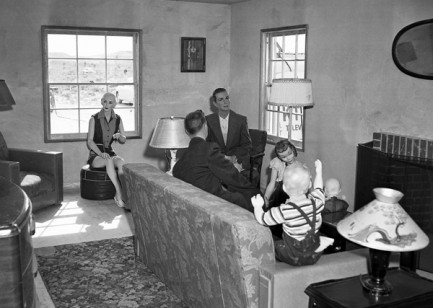
In the annals of curious atomic experiments—which includes blowing up goats and other farm animals—the exposure of mannequins to the effects of nuclear detonations must rank near the top. Scientists wanted to find out what a superhot thermal radiation flash followed by a crushing pressure wave would do to human-like constructs, and of course, they wreaked total havoc—but not uniformly, which was apparently the big takeaway from these tests. The above image and those below are all from the Nevada Test Site circa early to mid-1950s.
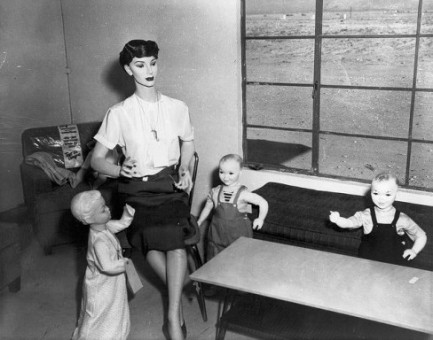
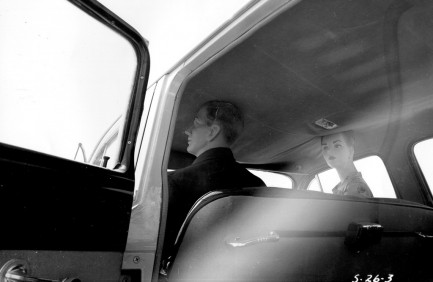
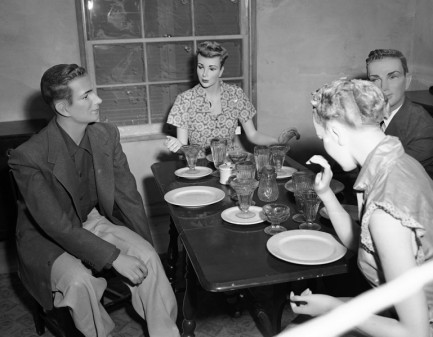
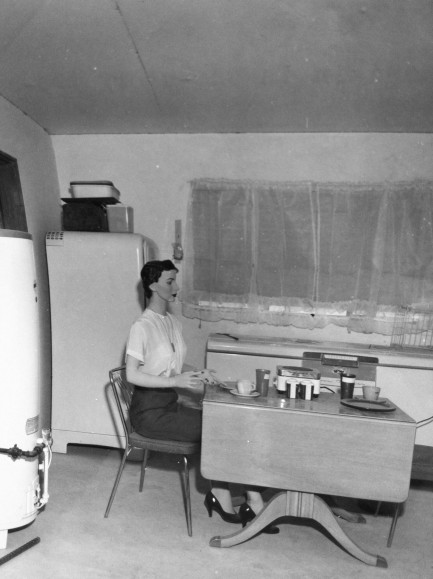
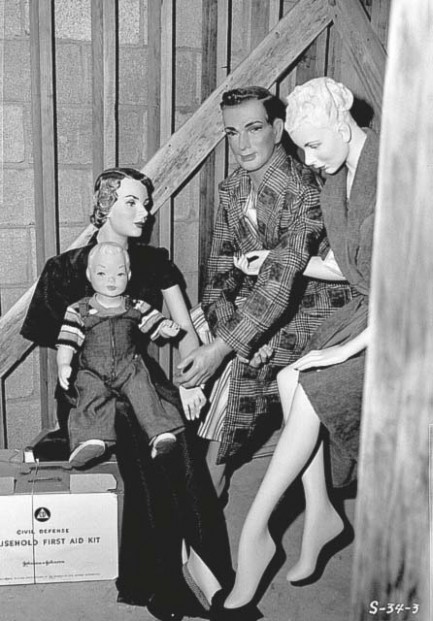

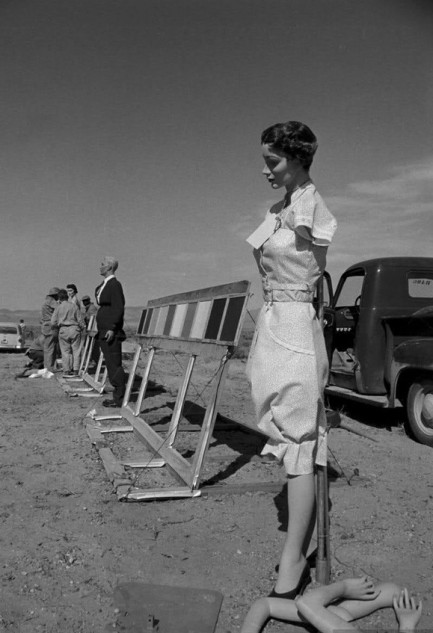
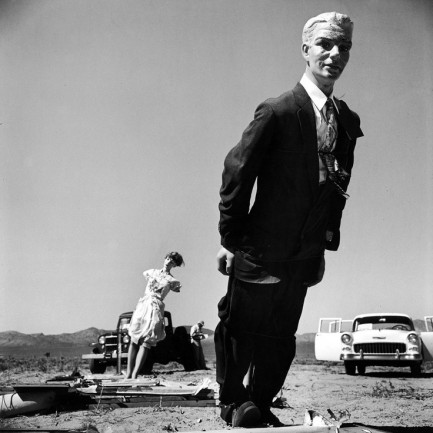
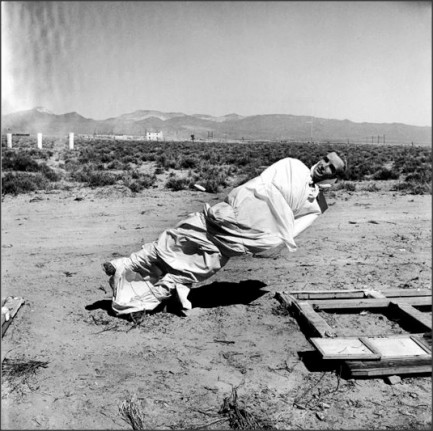
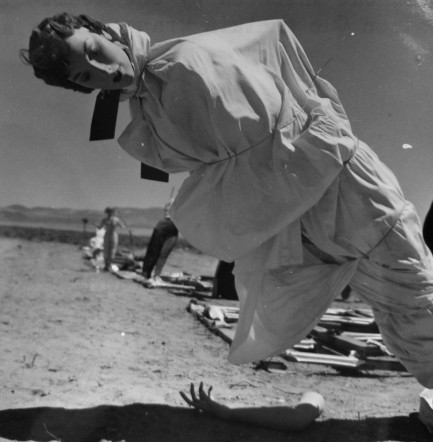
| Intl. Notebook | Jun 1 2013 |

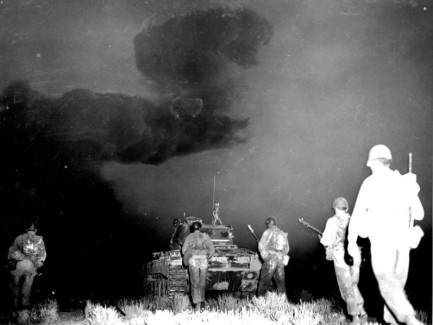
| Intl. Notebook | May 1 2013 |

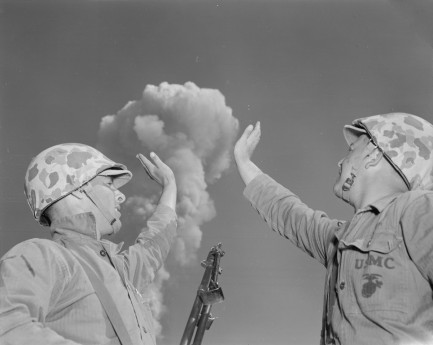
Back during the days of aboveground nuclear testing, particularly during the Korean War, the U.S. government wanted to be sure troops could operate under threat of nuclear attack. A field exercise known as Desert Rock IV was conducted at the Nevada Test Site during some of the detonations comprising the nuclear test series codenamed Operation Tumbler-Snapper. Thousands of soldiers conducted maneuvers as the blasts occurred, and were exposed to radiation, though the levels were said to be low. This particular photo is from the 20-kiloton airburst codenamed Dog, and shows two soldiers pretending to touch the bomb’s debris cloud. An aerial photo of the blast appears below. That was today in 1952.
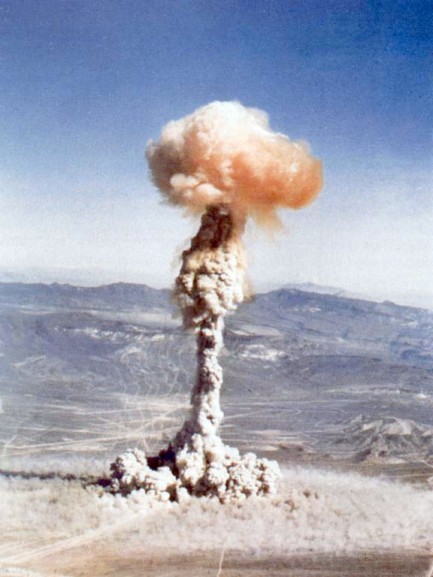
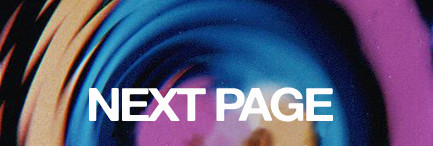 |
 |




































































